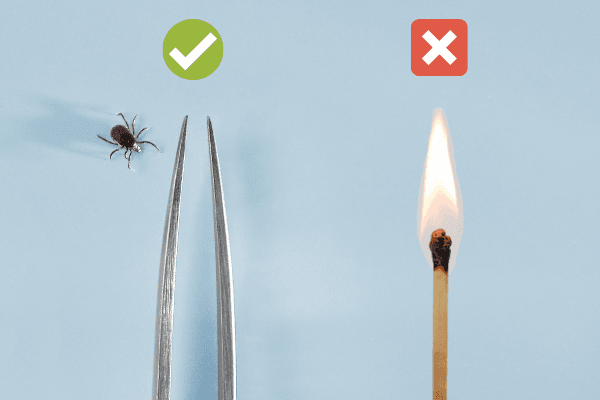Ticks are a problematic pest, especially in Southeast Georgia. Most common April through September, you will want to be vigilant about checking for ticks. If you do find a tick on you, there are tips you can use to make handling the issue easier. Knowing how to safely remove a tick and what to look for after a bite is important.
How to Safely Remove a Tick
We have all heard of the different tricks for removing ticks; however, they aren’t as safe as they may seem. The best way to safely remove a tick is with patience and a good pair of fine-tipped tweezers.
First clean your tweezers
Use the tweezers to grasp the tick as close to the skin as possible.
Pull gently and patiently work the tick out of the skin; DO NOT twist or pull sharply as this can tear the mouth parts, leaving them embedded in the skin.
After you have removed the tick, wash the area and wipe with rubbing alcohol or another form of antiseptic.
Do a thorough check for more ticks. Ticks can only spread germs by biting, so removing them before they get embedded in your skin has no risk of infection.

How NOT to Remove a Tick
Using tweezers is the safest way to remove a tick because even if mouthparts are left in the skin, they do not transmit Lyme disease or other tick-borne illnesses. The risk of infection comes from the fluids they release when they bite. Using heat, substances, or other methods can irritate the tick, causing it to release even more fluid into your skin.
Do NOT use a lighter or match on or near your skin.
Do NOT cover with nail polish, essential oils, petroleum jelly, or any other substance.
Do NOT squeeze or crush the body of the tick; doing so may force infected body fluid from the tick into your skin.
What to Look for After a Tick Bite
Not all ticks carry disease, but there are signs that you should look for as ticks can carry things such as Lyme disease and Rocky Mountain Spotted Fever. Symptoms for both include things like fever, headache, and rash.
How do I know if it is a rash and not just a bite reaction?
Observe the area.
A normal tick bite reaction will be a small red bump that might be warm to the touch. It can last for a few days or even weeks, but it should not grow in size during this time.
If you notice the redness begins to spread to more than 2” in diameter or shows signs of blistering, or has a noticeable red ring, you will want to seek medical attention.
If a rash is going to occur, it will usually show up within 3-10 days but can take as long as 30 days to appear.
Please note that a rash is not always present with Lyme disease. If you feel feverish or achy for unexplained reasons following a tick bite, consult a doctor.
Ticks are pests that we want to do our best to avoid! The best prevention is vigilance. If you are in a heavily wooded area or any area prone to ticks, it’s best to do thorough tick checks on yourself and any pets before returning indoors. Getting a tick off your skin before it can bite is easier than getting it out afterward.
Pest Control in Southeast Georgia
Not having to worry about pests invading your yard and home is a huge relief. At Yates-Astro Termite & Pest Control, we take our jobs very seriously. We are proud to have provided pest control to the Southeast Georgia area for almost 95 years. Contact us to keep your home protected from pests!

.2206140825262.png)